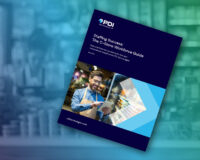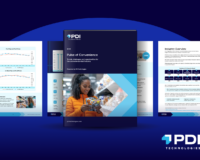
There’s overwhelming evidence that US consumers, across socioeconomic and demographic lines, want to buy from environmentally conscious companies and will pay more to do so. The defining factors in what types of sustainable products and services consumers will pay more for depend on credibility, category, and loyalty.
By identifying the needs, wants, and behaviors of the modern eco-conscious consumer, convenience retailers can establish long-term, data-driven sustainability strategies that position their business for sustained success.
Credibility
As more brands begin to make claims of sustainable practices, credibility is at the forefront of consumers’ minds.
According to the PDI Business of Sustainability Index, 79% of consumers want an easier way to identify environmentally friendly companies. For 53% of consumers, unambiguous language on products alone would help communicate the truth about sustainability practices, while 40% say they need third-party or independent validation to trust eco-friendly claims.
Category
Consumers are increasingly willing to pay more for sustainable products and services, based on year-over-year results. But not all categories are created equal when it comes to where consumers will spend more for sustainable options.
Utilities, food and restaurants, and gas stations lead then categories where consumers are most likely to make environmentally friendly purchases, followed by hotels, residential gas, car rentals, and airlines.
Loyalty
Sustainable habits and loyalty, PDI research found, are deeply intertwined—as evidenced by the fact that loyalty has emerged as a powerful driver of sustainable purchasing patterns. In fact, 74% of consumers say they would sign up for a loyalty app to reduce their carbon footprint.
Today, 75% of all consumers say they would fill up at a gas station that offers carbon offsetting. Of the 64% of consumers willing to pay more for that offset, 89% say they would also use a loyalty or rewards app. For consumers who will both pay more and sign up for a loyalty program, the percentage willing to fill up at a gas station that offers carbon offsetting rises to 91% from that initial 75%.
The results are clear: consumers who care about sustainability are willing and eager to form long-lasting relationships with brands they trust.
Shaping a sustainability strategy for sustained business success
PDI Loyalty solutions leverage robust data insights across the CPG, convenience, and fuel industries to help you gain a better understanding of your customers. Armed with powerful insights on consumers and the tools to reach them, you can build more personalized, valuable, and longer-lasting relationships with them.
Across the industry, loyalty program members bring 30% greater value than non-loyalty consumers in average convenience retail basket spend. The combination of sustainability strategies and loyalty programs has become a compelling driver of consumer preference, spend, and lifetime value.
5 tips for data-driven sustainability
Having a sustainability strategy has never been more important. PDI can be your partner in developing a strong, profitable, data-driven sustainability strategy. The foundation of every smart sustainability strategy starts with these fundamentals:
- Take a leadership role—act before the market forces you to. Sustainability allows brands to gain a competitive advantage today, but in the coming years sustainability is likely to become a necessity rather than a differentiator. Get ahead now to capture the gap in supply and demand (and keep building customer loyalty).
- Define a holistic sustainability strategy—even if you move incrementally. Small steps, when done with honesty and authenticity, can take you a long way. In the eyes of today’s consumers, transparency about processes and where you are in your sustainability journey is more important than big, but often empty, claims.
- Once you commit, keep going—sustainability is a long-term investment. And one that will pay out handsomely, especially if you can incentivize your customers to make that journey with you.
- Engage more effectively with consumers—promote your efforts to earn their trust. Involving your customers in your sustainability journey is a great way to inform them of your efforts and make them feel like their purchases are meaningful.
- Validate your efforts—work with independent third parties to build credibility. Establishing yourself as a trustworthy and sustainable brand is what ultimately drives long-term loyalty with increasingly skeptical consumers.
For more insight into the consumer preferences shaping today’s sustainability market, download the PDI Business of Sustainability Index.
You can thrive in today’s digital economy. Contact us today to learn how we can help you transform your business.


